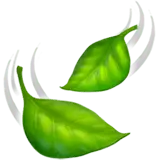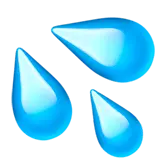Azalea Rhododendron 'Mother's Day' (Kurume) (EA)

ABOUT
The Rhododendron 'Mother's Day' (Kurume) is a vibrant and ornamental shrub known for its showy clusters of flowers. This plant boasts a dense, mounded form and is adorned with glossy, dark green leaves that provide a lush backdrop to its blossoms. Its foliage often takes on a leathery texture and can have an elliptical shape with a smooth edge, creating a luxurious green canvas throughout the year. The most striking feature of the 'Mother's Day' Rhododendron is its profusion of flowers, which typically bloom in the spring. The blooms are funnel-shaped and gather in large, spherical clusters known as trusses. Each truss is made up of multiple individual flowers, turning the shrub into a spectacular explosion of color when in full bloom. The flowers themselves are a vibrant pink, often with a subtle hint of red, and they can sometimes exhibit a light speckling in the throat, adding to their ornamental appeal. These vivid flowers are a popular choice for celebrating Mother's Day, as they are often at their most spectacular display around this time, making them an appropriate namesake for this rhododendron. Overall, the 'Mother's Day' Rhododendron is a compact and evergreen shrub that is celebrated for its dense foliage and magnificent floral display, creating a striking visual in any garden or landscape setting. Its rich green leaves coupled with the stunning pink blooms make it a sought-after plant for gardeners looking to add a touch of elegance and color to their outdoor spaces.
About this plant
 Names
NamesFamily
Ericaceae.
Synonyms
Mother's Day Azalea, Kurume Azalea.
Common names
Rhododendron 'Mother's Day' (Kurume) (EA)
 Toxicity
ToxicityTo humans
Rhododendron is poisonous to humans. If ingested, it can cause symptoms such as salivation, vomiting, diarrhea, abdominal pain, and lethargy. In severe cases, it may lead to heart problems, coma, and potentially death.
To pets
Rhododendron is also poisonous to pets, including dogs and cats. Ingestion can result in symptoms such as drooling, vomiting, diarrhea, decreased appetite, and abdominal pain. Severe poisoning can cause progressive weakness, lack of coordination, stupor, collapsing, hypotension, cardiovascular collapse, and death.
 Characteristics
CharacteristicsLife cycle
Perennials
Foliage type
Evergreen
Color of leaves
Green
Flower color
Pink
Height
3 feet (0.91 meters)
Spread
4 feet (1.22 meters)
Plant type
Shrub
Hardiness zones
5-8
Native area
Japan
Benefits
 General Benefits
General Benefits- Ornamental Appeal: Rhododendron 'Mother's Day' adds aesthetic value to landscapes with its vibrant flowers that bloom profusely in the spring.
- Attracts Wildlife: The plant is a source of nectar for pollinators, attracting butterflies and bees to the garden.
- Shade Tolerant: It can thrive in partially shaded conditions, making it suitable for planting under trees or in shadowed areas of the garden.
- Durable: This variety is known for its hardiness and is capable of withstanding occasional temperature fluctuations once established.
- Evergreen Foliage: It maintains its glossy, dark-green leaves throughout the year, providing constant greenery in the garden.
- Low Maintenance: Requires minimal pruning and care once established, making it ideal for those seeking a low-maintenance landscaping option.
- Soil Adaptability: It can adapt to a range of acidic soils, as long as they are well-draining.
- Compact Growth: Its relatively small size and compact growth habit allow for planting in smaller garden areas or as part of a border design.
 Medical Properties
Medical PropertiesThis plant is not used for medical purposes.
 Air-purifying Qualities
Air-purifying QualitiesThis plant is not specifically known for air purifying qualities.
 Other Uses
Other Uses- As a natural fabric dye: The flowers of Rhododendron 'Mother's Day' can be used to create natural dyes for coloring textiles, offering hues of pink, purple, or yellow depending on the mordant used.
- Insect repellent: Some cultures use the leaves of Rhododendrons to repel insects by placing them among linens or clothing.
- Photography: The vibrant flower clusters of Rhododendron 'Mother's Day' are often used as stunning subjects or backdrops in botanical photography.
- Greeting cards: Rhododendrons are popular motifs on greeting cards, especially for Mother's Day, symbolizing appreciation and love.
- Feng Shui: In Feng Shui, Rhododendrons are sometimes used for their energetically vibrant flowers to enhance positive energy in a home garden.
- Bonsai: Rhododendron 'Mother's Day' can be cultivated as a bonsai plant, admired for its ability to bloom profusely even when trimmed to a miniature size.
- Educational model: Rhododendrons can be used in education to teach about plant biology and breeding, demonstrating hybridization and diversity in flowering plants.
- Aromatherapy: While not extracted for essential oils, the flowers can be used in homemade potpourris or sachets to provide a gentle, floral fragrance.
- Artistic inspiration: The shape and color of Rhododendron 'Mother's Day' flowers often inspire artists and decorators for designs in various mediums, from watercolor paintings to fabric patterns.
- Memorial gardens: Due to their beauty and longevity, Rhododendrons are often planted in memorial gardens as a lasting tribute to loved ones.
Interesting Facts
 Feng Shui
Feng ShuiThe Rhododendron is not used in Feng Shui practice.
 Zodiac Sign Compitability
Zodiac Sign CompitabilityThe Rhododendron is not used in astrology practice.
 Plant Symbolism
Plant Symbolism- Caution: Rhododendron is often associated with caution due to the plant's toxic nature, which can be harmful if ingested.
- Beware: Similarly to caution, the toxicity of the plant signifies a warning to be wary of danger.
- Abundance: The large clusters of flowers can symbolize abundance and wealth.
- Elegance: The beautiful, showy flowers of the Rhododendron symbolize elegance and sophistication.
- Homecoming: In some cultures, Rhododendrons are considered a symbol of homecoming and hospitality.
- Temperance: The Rhododendron can symbolize moderation or temperance, as it thrives in well-balanced environments.
 Water
WaterAzaleas like the Rhododendron 'Mother's Day' (Kurume) should be watered deeply once a week, allowing the soil to dry slightly between waterings. During hot or dry periods, increase watering to twice a week. Each watering session should provide enough water to moisten the soil to a depth of at least 6 inches, which might equate to about 1 to 1.5 gallons per square yard, depending on the soil type and environmental conditions. Be careful not to overwater, as azaleas are prone to root rot in poorly drained soils. It's best to water at the base of the plant, avoiding wetting the foliage, to reduce the risk of fungal diseases
 Light
LightRhododendron 'Mother's Day' (Kurume) azaleas thrive in dappled shade, ideally receiving morning sunlight and afternoon shade, or light filtered through a canopy of trees. Avoid placing them in full sun, as too much direct sunlight can scorch their leaves, and similarly, deep shade may result in fewer blossoms. The ideal spot is one where they can be protected from the harsh midday sun yet still receive an ample amount of morning or late afternoon light
 Temperature
TemperatureAzaleas like Rhododendron 'Mother's Day' (Kurume) prefer moderate temperatures and can generally survive in temperatures ranging from 20°F to 80°F. They thrive in temperatures between 60°F and 70°F. If the temperature drops below 20°F, it's important to provide protection, such as mulch, to help insulate the roots from extreme cold
 Pruning
PruningRhododendron 'Mother's Day' (Kurume) azaleas should be pruned to maintain shape, encourage bushier growth, remove dead or diseased branches, and promote more abundant blooms for the following season. Prune just after flowering is finished, typically in late spring or early summer, but avoid late summer or fall pruning as it may stimulate new growth that won't have time to harden off before winter. Selective thinning of branches can help increase air circulation and light exposure to the center of the plant, enhancing overall health
 Cleaning
CleaningAs needed
 Soil
SoilAzaleas, commonly referred to as Mother's Day Azaleas, thrive in well-draining, acidic soil with a pH of 4.5 to 6.0. A recommended soil mix is equal parts peat moss, pine bark, and perlite to ensure proper drainage and aeration. Regular testing and amending with sulfur or peat may be necessary to maintain the acidic conditions preferred by the Azaleas.
 Repotting
RepottingMother's Day Azaleas should be repotted every 2 to 3 years or when they outgrow their current pot. This helps to refresh the soil and provide the roots with new space to grow. It's best to repot in late winter or early spring before new growth starts.
 Humidity & Misting
Humidity & MistingMother's Day Azaleas prefer moderate to high humidity levels, ideally around 50-60%. If the indoor air is too dry, the use of a humidifier or a pebble tray with water placed under the plant's pot can help increase humidity around the plant.
 Suitable locations
Suitable locationsIndoor
Bright, indirect light and keep soil slightly moist.
Outdoor
Plant in dappled shade, acidic soil, and protect from harsh sun.
Hardiness zone
6-9 USDA
 Life cycle
Life cycleThe Kurume Azalea ('Mother's Day') begins its life cycle with seed germination occurring in a moist, well-draining soil environment, preferably under partial shade. After sprouting, the seedling enters a juvenile vegetative stage where it focuses on root and foliage growth, gradually maturing into a compact, evergreen shrub. As it transitions to the adult phase, it develops distinctive features like its shiny, dark green leaves and the capacity to flower, with a proliferation of vibrant red blooms typically emerging between late winter to early spring. The flowering stage is critical for pollination, after which the plant may produce seeds that, if viable, can be dispersed to start new azaleas. The Kurume Azalea experiences seasonal cycles of growth and dormancy, with the plant conserving energy during colder months and resuming vigorous growth in the spring. With proper care, including pruning, fertilization, and disease control, the Kurume Azalea may enjoy a long life span, often several decades in suitable climates.
 Propogation
PropogationPropogation time
Spring-Early Summer
The most popular method of propagation for the Rhododendron 'Mother's Day', which is a Kurume Azalea, is by semi-hardwood cuttings. Typically, the best time to take cuttings is during the late summer, after the blooms have faded and new growth has started to harden slightly. The cuttings should be about 4 to 6 inches (10 to 15 centimeters) long and include several sets of leaves. The lower leaves are removed, and the cut end can be dipped in rooting hormone to encourage root development. The prepared cutting should then be placed in a pot with a mix of peat and perlite, ensuring that the soil is kept moist but not soaking wet. It's important to provide a humid environment for the cuttings, either by using a humidity dome or regularly misting the plants until roots have established, which typically takes several weeks.









